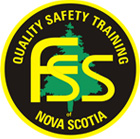Mechanics Hand Injected with Hydraulic Fluid
Hazard Alert
Mechanics Hand Injured by Injection of Hydraulic Fluid
A mechanic was looking for the source of a hydraulic leak on a skidder while the machine was running. After narrowing his search to two hydraulic hoses, he separated the hoses by grabbing one of them at a point away from the apparent area of the leak. When the skidder operator activated the hydraulics, a high-pressure spray of hydraulic fluid from an unnoticed pinhole leak on the hose the mechanic was holding punctured his glove and the skin of his finger, injecting fluid into his finger. Although amputation is often the medical consequence of high-pressure injection injuries, in this case the mechanic’s finger returned to normal after treatment with broad-spectrum antibiotics and a period of light duty.
WHY DID THIS HAPPEN?
The lack of a clear plan of action to locate the hydraulic leak and poor communication between the mechanic and the skidder operator contributed to the mechanic’s injury. The two direct causes of the incident were the fact that the skidder was left running with the hydraulic fluid under pressure while the mechanic searched for the source of the leak, and the hydraulics were activated by the operator while the mechanic was holding a hydraulic hose.
Recommendations to Prevent a Recurrence
- A pinhole leak in a hydraulic hose that’s under pressure can release toxic fluid at a speed of about 600 feet per second. Fluid at that pressure can puncture clothing such as gloves and coveralls and penetrate skin from a distance of as much as four inches. When the fluid enters the body, it begins to kill tissue. Medical treatment uusually involves immediate surgery to remove the fluid. Because of the remote nature of most logging operations, particular caution must be used around hydraulic hoses, as gangrene can set in if an injection injury isn’t treated promptly.
- The general rule on dealing with hydraulic leaks is to shut down the machine and drain the pressure from hydraulic hoses before inspecting them for leaks. A hydraulic leak can almost always be located without the need to put the hydraulic fluid under pressure. Even if the machine has been shut off, mechanics and machine operators need to ensure that pressure has been relieved from the hoses. To check a hose for leaks while pressurized, run a piece of cardboard along the hose, wearing gloves, long sleeves and safety glasses. If the hydraulics need to be activated for any reason during the work, the mechanic should step back a safe distance, then signal the operator to start up the machine.
- All mobile machine mechanics and operators need to be aware of the hazards of hydraulic fluid under pressure and of the safe procedures for working near it.
